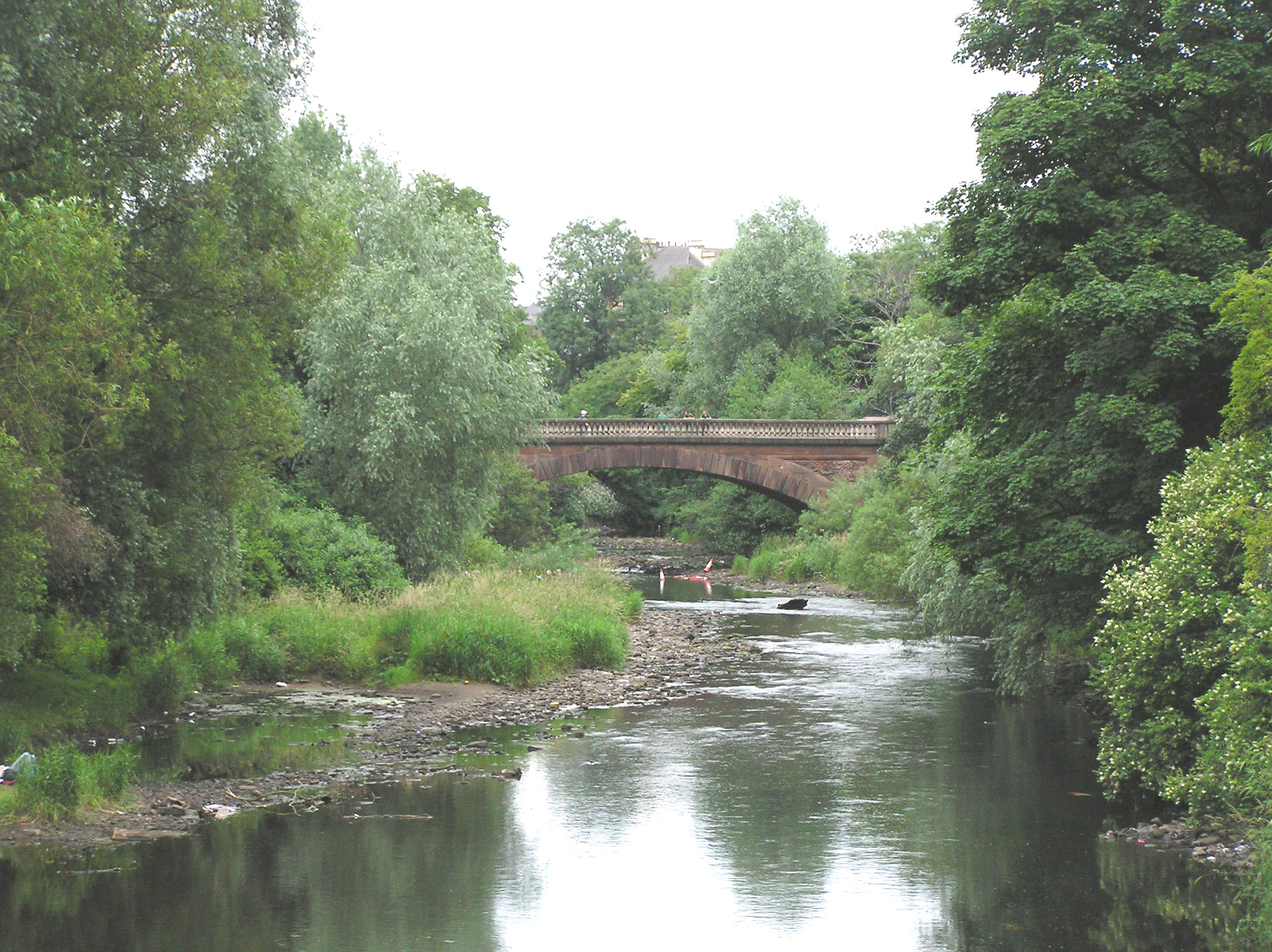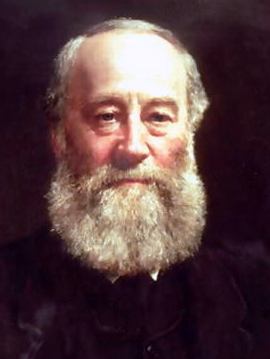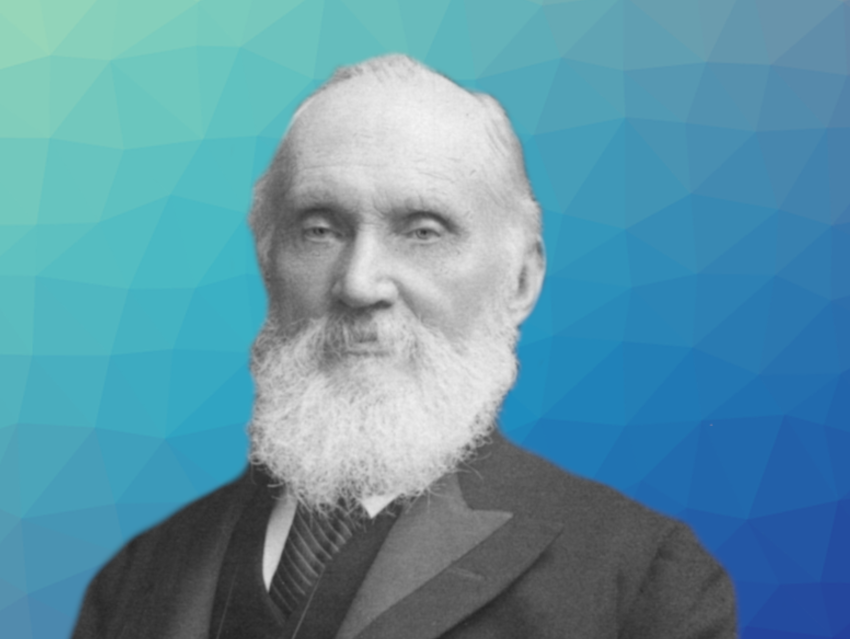William Thomson was born in Belfast, then Ireland, on June 26, 1824 [1]. His father, James Thomson, was Professor of Mathematics at the Royal Academical Institution of Belfast at the time [2], and also taught his mathematics to his children at home. William’s mother Margaret died in 1830 when he was six years old.
1 Thomson’s Education and Career
In 1832, the family moved to Glasgow, Scotland, UK, where James was appointed Chair of Mathematics at the University. In 1834, William Thomson became a young student at the University of Glasgow, where he studied mathematics and physical sciences, Greek, Latin, logic, and philosophy. He published his first scientific paper in 1841, submitted under the pseudonym “P. Q. R.” with the help of his father [3], in which he defended Joseph Fourier’s mathematical work on Fourier series.
Thomson left Glasgow and became a student at St. Peter’s College, or “Peterhouse”, the oldest constituent college of the University of Cambridge in England, UK, in 1841. While showing a broad range of interests in, e.g., athletics, music, and literature, Thomson continued to focus on physics and mathematics. In 1845, after graduating as the second-highest scoring student in his class, he spent some time working with Henri Victor Regnault in Paris, France—a chemist and physicist known for his measurements of the thermal properties of gases.
In 1846, Thomson was appointed Chair of Natural Philosophy at the University of Glasgow, at only 22 years of age. He would remain in this position until his retirement in 1899.
In 1883, Thomson received the Royal Society’s Copley Medal. In 1892, he was ennobled and became the first British scientist to be elevated to the House of Lords: Baron Kelvin, of Largs in the County of Ayr. The title refers to the River Kelvin near the University of Glasgow (see Fig. 1). In 1904, he became Chancellor of the University of Glasgow. Sir William Thomson, Baron Kelvin of Largs, died on December 17, 1907.
 |
|
Figure 1. The river Kelvin (Photo: Finlay McWalter, wikimedia commons, CC BY-SA 3.0). |
2 Thomson’s Research
William Thomson, or Lord Kelvin, as he became known after his ennoblement, made important contributions to thermodynamics, among other topics. He devised the first absolute temperature scale, i.e., a temperature scale that is independent of the physical properties of any specific substance and in which the zero of the scale equals “absolute zero”—the coldest possible temperature at which particles are stationary. He calculated that absolute zero was equivalent to −273 °C, very close to the −273.15 °C we know today.
The kelvin (K), the base unit of measurement for temperature in the International System of Units (SI after the French Système International d’Unités), is named in his honor.
Thomson also co-discovered the Joule–Thomson effect (see below), was a scientific advisor for the installation of early transatlantic cables—even joining several cable-laying expeditions, and worked on atmospheric electricity, to name just a few of the many fields he contributed to. In addition to the kelvin as a unit of measurement, a vast number of physical phenomena, technical devices, measuring instruments, and mathematical concepts are named after Kelvin/Thomson.
2.1 Absolute Zero and the First Absolute Temperature Scale
According to Charles’ law, the temperature and the volume of a gas are proportional at constant pressure, i.e., V = kT (V: volume, k: non-zero constant, T: temperature). As the temperature sinks, so does the volume.
Charles’ law implies that at a certain, lowest-possible temperature, the volume of a gas will be zero. Thomson suggested that this could be the basis for an absolute temperature scale, independent of the physical properties of any specific substance that is used as a standard. He proposed this scale in 1848 in a paper titled “On an Absolute Thermometric Scale founded on Carnot’s Theory of the Motive Power of Heat, and calculated from Regnault’s Observations” [4].
Thomson also calculated absolute zero, or “infinite cold”, as it was sometimes called at the time. In a footnote, he states, “This is what we might anticipate, when we reflect that infinite cold must correspond to a finite number of degrees of the air-thermometer below zero; since if we push the strict principle of graduation, stated above, sufficiently far, we should arrive at a point corresponding to the volume of air being reduced to nothing, which would be marked as –273° of the scale (–100/.366, if .366 be the coefficient of expansion); and therefore –273° of the air-thermometer is a point which cannot be reached at any finite temperature, however low.”
Thomson’s value for absolute zero of −273 °C is very close to the actual value of −273.15 °C. (Technically, he was even closer than his text indicates, since -100/.366 is about -273.22.)
The kelvin, named in Lord Kelvin’s honor, was formally added to the SI base units in 1954, at first as “degree Kelvin” similar to degree Celsius [5]. The name “degree kelvin” was officially changed to “kelvin” in 1967 [6].
The Rankine Scale
Each unit on Thomson’s scale, or each kelvin, is equal to 1 °C. An alternative to the Kelvin scale is the Rankine scale, proposed by engineer and physicist William John Macquorn Rankine in 1859.
Analogous to the Kelvin scale, zero on the Rankine scale is absolute zero, but a temperature difference of one Rankine is defined as equal to one degree Fahrenheit, instead of the degrees Celsius used by the Kelvin scale. The Rankine scale is sometimes used in engineering when computations are done using degrees Fahrenheit.
2.2 Thermodynamics and James Prescott Joule
In 1847, Thomson attended the British Association for the Advancement of Science’s annual meeting in Oxford, UK. There, his later friendship and collaboration with James Prescott Joule (see Fig. 2) has its origin. Joule is known, e.g., for his work on electricity, such as Joule’s first law, which states that the power of heat (P) produced by a conductor is equal to the square of the current intensity (I) that passes through it, multiplied by the resistance (R), i.e., P = I2·R. The SI unit for energy is named joule (J) in his honor.
 |
|
Figure 2. James Prescott Joule. |
Joule also famously worked on thermodynamics, investigating the connection between heat and other forms of energy. At the time, it was thought that heat could not be created or destroyed, but Joule argued that, e.g., heat and mechanical energy can be converted into one another, a concept which he also presented at the annual meeting.
Thomson was intrigued and focused on thermodynamics, too. By 1852, he had come to the conclusion that heat was a form of motion and, indeed, not a persistent substance that cannot be destroyed or created [7]. Joule read the resulting paper and contacted Thomson. The two researchers collaborated for several years, mostly by mail. Joule performed experiments and Thomson analyzed the results and suggested further experimental work.
Together, Thomson and Joule discovered, for example, the Joule–Thomson effect in 1852 [8]. This effect is the temperature change of a gas or liquid when it is forced, e.g., through a valve while keeping it insulated so that no heat is exchanged with the environment. At room temperature, most gases cool during such a “throttled” expansion.
2.3 Thomson’s Many Other Contributions—and Some Controversy about the Age of the Earth
Thomson had already made these important contributions to thermodynamics by the time he was 28, and many other discoveries and inventions were yet to come. He continued his scientific work, branched out into engineering while working on the installation of transatlantic cables, advocated for the international adoption of standardized scientific units of measurement, contributed to the understanding of electromagnetism—coining, for example, the terms permeability and susceptibility, co-wrote a seminal textbook of natural philosophy, was an avid sailor and accomplished navigator, and invented a tide-predicting machine.
Of course, a researcher as prolific as Thomson was not always correct. For example, he made an early estimation of the age of the Earth based on the cooling of the planet and the temperature gradient at the surface. His initial estimates of the Earth’s age ranged from 20 to 400 million years [9], and he refined his estimate to 20 to 40 million years by 1897. Now Lord Kelvin, he criticized geologists for their assertion that the Earth must be much, much older—potentially in the billions of years. (Today, the Earth is estimated to be about 4.54 billion years old.) Lord Kelvin also disagreed with supporters of Charles Darwin’s theory of evolution through natural selection (published in 1859 in “On the Origin of Species”). As a devout Christian, Kelvin believed that the Earth was not old enough for this slow process, and favored a sped-up, divinely guided process (“theistic evolution”).
Ultimately, Kelvin’s calculations of the age of the Earth were wrong, mostly due to his assumptions about the structure of the planet [10]. It has been argued that the discovery of radioactive heat sources in the Earth was what fundamentally undermined Lord Kelvin’s estimate, which assumed that there was no undiscovered source of energy. However, repeating his calculations while accounting for the additional heat that would actually contribute to the temperature gradient at the surface yields very similar results for the age of the Earth [11].
Instead of the rigid, homogenous planet Lord Kelvin used as a basis for his calculations, Earth has a thin, solid outer shell and a fluid core that allows for convection, and thus, a much more efficient heat transfer than the mere diffusion considered by Kelvin. When this is taken into account—as it was by one of Kelvin’s former assistants, John Perry, in 1895—an age much closer to the correct one can be calculated [12]. Coincidentally, if Perry’s suggestion of a possibly fluid Earth interior had been more widely publicized and understood among geologists, maybe the concept of continental drift would have met less resistance in the early 20th century.
William Thomson, or Lord Kelvin, is the answer to Guess the Chemist (151).
References
[1] The life of William Thomson, Baron Kelvin of Largs,
Silvanus P. Thompson,
Macmillan, London, 1910.
[2] Professor James Thomson (1786 – 1849): Mathematician And Academician,
Dictionary of Ulster Biography, www.newulsterbiography.co.uk. (accessed June 4, 2024)
[3] On Fourier’s expansions of functions in trigonometric series,
P. Q. R.,
Cambridge Math. J. 1841, 2, 258–262.
[4] On an Absolute Thermometric Scale founded on Carnot’s Theory of the Motive Power of Heat, and calculated from Regnault’s Observations,
William Thomson,
Phil. Mag., October 1848.
[5] Resolution 4 of the 10th CGPM (1954): Definition of the SI unit of thermodynamic temperature (kelvin),
The 10th Conférence Générale des Poids et Mesures (CGPM), 1954.
[6] Resolution 3 of the 13th CGPM (1967): SI unit of thermodynamic temperature (kelvin),
The 13th Conférence Générale des Poids et Mesures (CGPM), 1967.
https://doi.org/10.59161/CGPM1967RES3E
[7] On the dynamical theory of heat; with numerical results deduced from Mr. Joule’s equivalent of a thermal unit and M. Regnault’s observations on steam,
William Thomson,
Math. Phys. Papers 1852, 174–332.
https://doi.org/10.1017/cbo9780511996009.049
[8] On the thermal effects experienced by air in rushing through small apertures,
John P. Joule, William Thomson,
Phil. Mag. 1852, 284, 481–492.
[9] On the Secular Cooling of the Earth,
William Thomson,
Trans. Roy. Soc. Edinb. 1862, 23, 160–161.
https://doi.org/10.1017/s0080456800018512
[10] Kelvin, Perry and the Age of the Earth,
Philip C. England, Peter Molnar, Frank M. Richter,
Am. Sci., July–August 2007, 95, 342.
https://doi.org/10.1511/2007.66.342
[11] Kelvin and the Age of the Earth,
Frank M. Richter,
J. Geol. 1986, 94, 395–401
https://www.jstor.org/stable/30068713
[12] On the Age of the Earth,
John Perry,
Nature 1895, 51, 224–227.
https://doi.org/10.1038/051582a0



